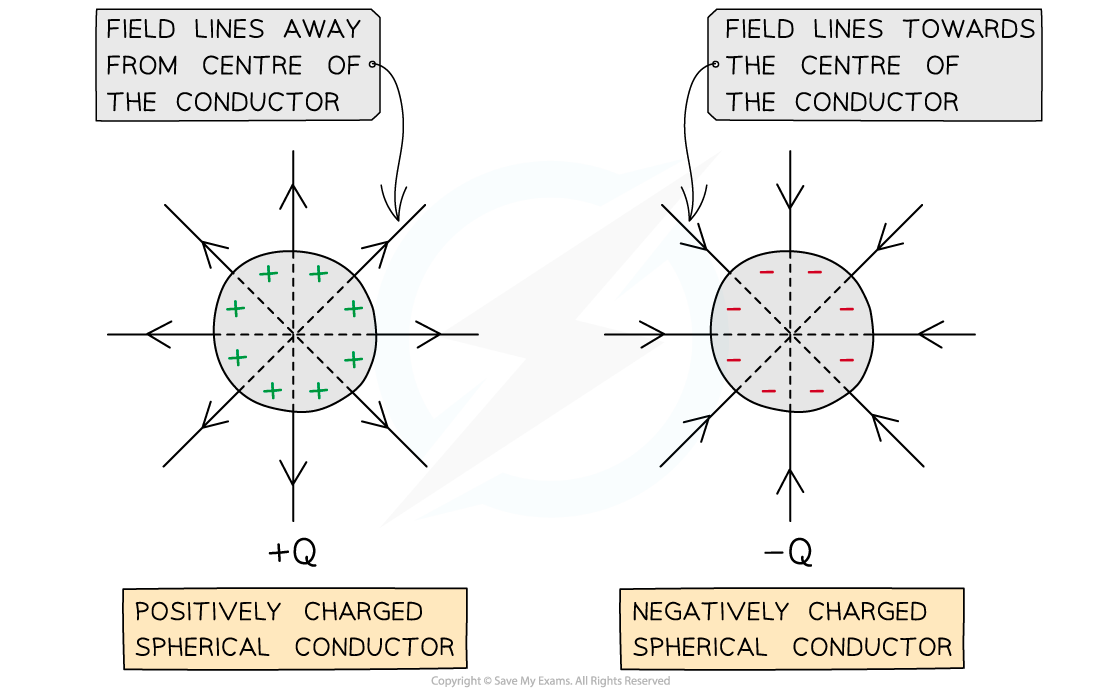Electric Fields (OCR A Level Physics): Revision Note
Exam code: H556
Defining Electric Fields
A charged object creates an electric field around itself
This is similar to the way in which magnets create magnetic fields
An electric field can be defined as:
A region where an electric charge experiences a force
If other charges enter the field then they will experience an electric force, attracting or repelling them from the object
Since force is a vector, the direction of this force depends on whether the charges are the same or opposite
The force is either attractive or repulsive
Recall that opposite charges (positive and negative) charges attract each other
Conversely, like charges (positive and positive or negative and negative) repel each other

Electric fields are due to charges. The field around a charge gives rise to an electric force
Point Charge Approximation
For a point outside a spherical conductor, the charge of the sphere may be considered to be a point charge at its centre
A uniform spherical conductor is one where its charge is distributed evenly
The electric field lines around a spherical conductor are therefore identical to those around a point charge
An example of a spherical conductor is a charged sphere
The field lines are radial and their direction depends on the charge of the sphere
If the spherical conductor is positively charged, the field lines are directed away from the centre of the sphere
If the spherical conductor is negatively charged, the field lines are directed towards the centre of the sphere

Electric field lines around a uniform spherical conductor are identical to those on a point charge
Examiner Tips and Tricks
You might have noticed that the electric fields share many similarities to the gravitational fields. The main difference being the gravitational force is always attractive, whilst electrostatic forces can be attractive or repulsive.
You should make a list of all the similarities and differences you can find, as this could come up in an exam question.

Unlock more, it's free!
Did this page help you?